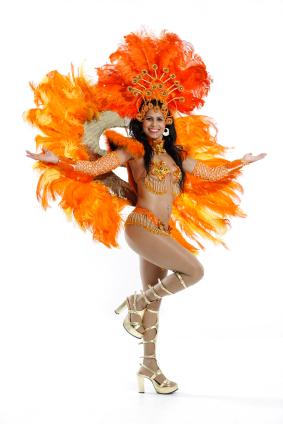
Brazilian dance music has spread far beyond the South American continent to be heard all over the world. Whether it's Bossa Nova in the ballroom or samba in the club, the beats and melodies make people want to move.
Hybrid of Culture and Hardship
Brazil has a long history of colonialization and cultural amalgamation. From the early Jesuit priests teaching the natives church hymns, to the African slaves brought over by the Europeans, the richness of the country's resources resulted in a rich mix of cultural influences.
The melting pot's first worldwide export was probably the Bossa Nova, a distinct "new trend" developed in the late fifties and early sixties. While the phenomenon itself only lasted for six years, it had a lasting influence on jazz standards and infused the popular music scene with a change in rhythmic structure of songs. The distinctive rhythm was integrated into all sorts of music from classical to rock and roll.
However, that was only a small part of the Brazilian music scene. There were many other forms of both popular and folk dance music, including new forms such as the music for Capoeira. This dancing martial art was always accompanied by handheld instruments, and singers who would take turns either accompanying or playing along with each other.
The Capoeira dance form and music originated with the slaves and workers of Brazil. The merging of African musical influences with the Spanish and Portuguese popular music also resulted in a much more widespread form of dance and music: the Samba.
Samba Takes Hold
While it developed long before the Bossa Nova, the samba was unique to Brazil, and especially Rio de Janeiro, for most of its history. Experts disagree as to the origin of the name, which could be Arabic, African, or Portuguese in derivation. Most likely the answer is like the music itself: a combination of cultural influences.
Samba music is basically a 2/4 beat that varies with the choruses sung and accompanied by the batacuda rhythm backed up by a variety of stringed instruments such as guitars and percussion ensembles. The samba dance, on the other hand, has more of a 3/2 rhythm, counted "one-and-two, three-and-four" with a basic step-ball-change pattern for the feet.
Since most samba music is very fast to begin with, moving three steps to every two beats leads to a very energetic dance. At the same time, it is simple enough that almost anyone can do a basic step, and thousands of people fill the streets every year during the Carnaval in Rio de Janiero when the streets are filled with this beloved Brazilian dance music.
Continuing to Grow
While there are a lot of artists who prefer a "pure" kind of samba music such as the band Quinteto em Branco e Preto, the musical form has also spawned many more hybrids. Samba reggae, for example, has become a great way to combine the Brazilian dance music with the dance hall style. Rap and rock and roll artists integrated the sound into their music, and the form itself continued to grow offshoots such as "partido alto" which had a particular way of playing the rhythm instruments like the pandeiro.
Finding Brazilian Dance Music
Thanks to its popularity, Brazilian music is very easy to find. Most major cities have Latin dance clubs or social dance groups that include Salsa in their repertoire, often accompanied by live bands.
You don't have to go any further than your computer, however. Podcasts such as AnjiBee's ChillCast have produced hours of dance music free to listen to and often free to download. Other artists such as the Melbourne-based Sol Nation often post free videos and downloads of Brazilian-influenced music. Another artist, Vanessa Agle Isaac, is a Brazilian dancer and exercise instructor who offers both DVDs and CDs of dance music and moves for easy download.
You can also find all sorts of new interesting music by using the Pandora listening service with an artist such as "Marisa Monte" or "Brazilian Beats 6".The site will play not only those artists but also similar music, allowing you to experience a broad spectrum of music from that country and tailor it to what you like.
There is enough depth to the dance music of Brazil to keep feet moving and ears happy for years. Start exploring and you will soon find out why people all over the world choose this music when they get the urge to dance.







